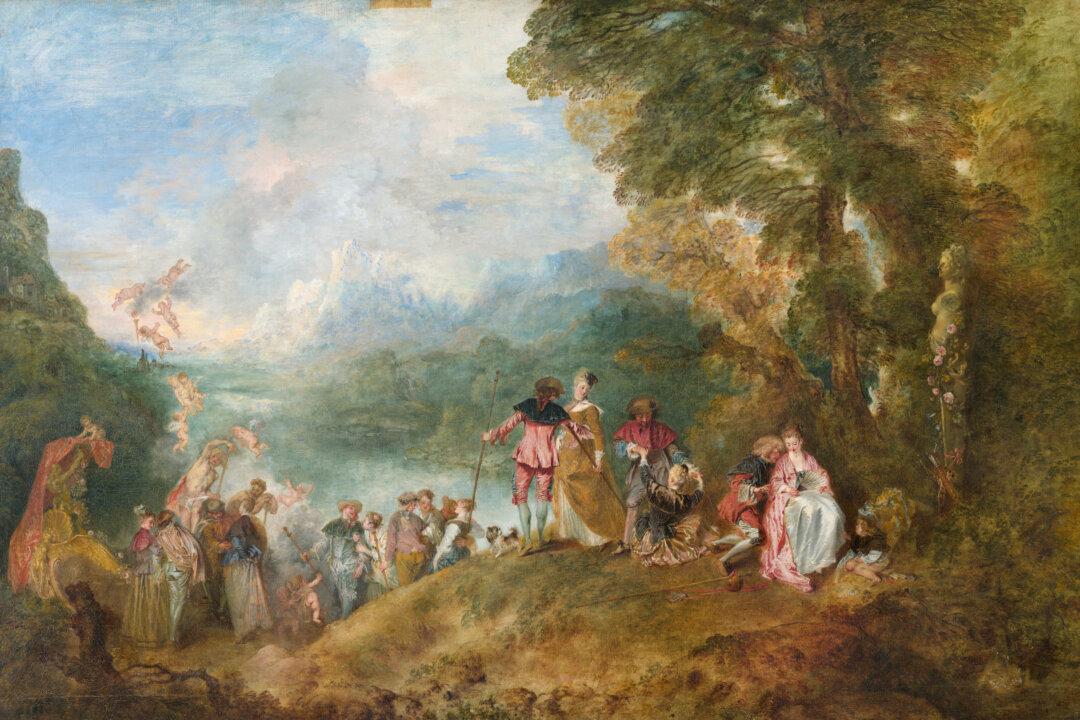NEW YORK—Imagine your most memorable moments captured in a painting. The scene could be of time spent at leisure, without a goal in sight, talking with friends outdoors in mild weather. The conversation is lively, sometimes heated, but there’s no finger-pointing whatsoever. You challenge each other to think in ways you had not anticipated before taking that relaxed, outdoor stroll. While you are in the middle of such intellectual stimulation, off to the side, under the shade of the trees, young couples are flirting while children play and a dog runs around.
Now, imagine this painted scene of your small outdoor party but you are wearing elegant, 18th-century clothes. Add to the canvas some cherubs playfully swirling in the sky among the puffy white clouds, and you have what is called the “fête galante”—literally translated from French as the “gallant party.” Fête galante is an art genre and musical style that Jean-Antoine Watteau initiated with his painting “The Embarkation for Cythera,” which he submitted to the French Academy in 1717 and which can be seen in The Louvre Museum today.






